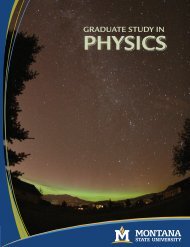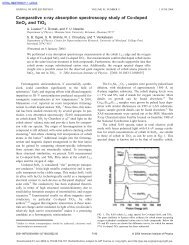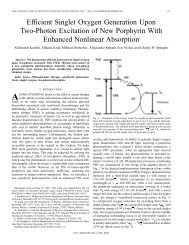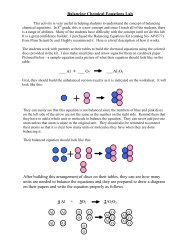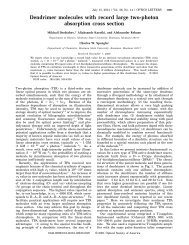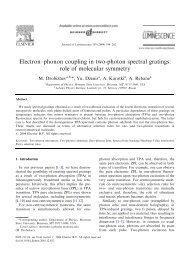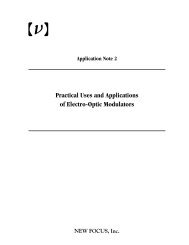Defects in inorganic photorefractive materials and their investigations
Defects in inorganic photorefractive materials and their investigations
Defects in inorganic photorefractive materials and their investigations
You also want an ePaper? Increase the reach of your titles
YUMPU automatically turns print PDFs into web optimized ePapers that Google loves.
<strong>Defects</strong> <strong>in</strong> <strong>in</strong>organic <strong>photorefractive</strong> <strong>materials</strong> <strong>and</strong> <strong>their</strong> <strong>in</strong>vestigations 25<br />
Analogous MCD-ODMR studies have been performed with KTaO 3 :Ni [142].<br />
Three low symmetry defects <strong>in</strong> various charge states were found.<br />
6 <strong>Defects</strong> <strong>in</strong> the sillenites Bi 12 MO 20<br />
(BMO, M = Si, Ge, Ti)<br />
In <strong>their</strong> review article, Arizmendi et al. [144] drew attention to the lack of<br />
knowledge concern<strong>in</strong>g the nature <strong>and</strong> role of defects <strong>in</strong> these <strong>materials</strong>. The<br />
situation has been clarified to a large extent, new spectroscopic evidence be<strong>in</strong>g<br />
the ma<strong>in</strong> object of this Section.<br />
6.1 Intr<strong>in</strong>sic defects <strong>in</strong> undoped crystals<br />
Fig. 11. Upper part (arbitrary<br />
ord<strong>in</strong>ate scale):<br />
Bleached state absorption<br />
of BGO at 80 K (dashed l<strong>in</strong>e)<br />
<strong>and</strong> additional absorption<br />
(10.7 cm −1 at maximum)<br />
<strong>in</strong>duced by an illum<strong>in</strong>ation<br />
with blue light (solid grey<br />
l<strong>in</strong>e). Lower parts: CD <strong>and</strong><br />
MCD spectra (1.4 K) <strong>in</strong> the<br />
bleached state (dotted l<strong>in</strong>es)<br />
<strong>and</strong><strong>in</strong>thecoloredstate(solid<br />
l<strong>in</strong>es).<br />
The most precise <strong>in</strong>formation has been obta<strong>in</strong>ed by comb<strong>in</strong>ed optical<br />
absorption, MCD <strong>and</strong> ODMR studies, performed with thermally bleached<br />
(e.g., 1/2 hour at 500 ◦ C) as well as optically colored crystals <strong>in</strong> Paris<br />
[145, 146, 147, 148, 149, 150] <strong>and</strong> <strong>in</strong> Osnabrück [149, 151]. Several important<br />
conclusions are summarized <strong>in</strong> Ref. [152] <strong>and</strong> <strong>in</strong> a forthcom<strong>in</strong>g article<br />
[153]. As illustrated <strong>in</strong> the central part of Fig. 11 for BGO as an example,<br />
an undoped <strong>and</strong> thermally bleached BMO sample does not exhibit any MCD<br />
signal <strong>in</strong> the near-IR to UV spectral range. This means that the ’shoulder’ observed<br />
near 3 eV <strong>in</strong> the correspond<strong>in</strong>g absorption spectrum (top of Fig. 11) is<br />
necessarily correlated with a diamagnetic defect. The ’shoulder’ has obviously<br />
a counterpart <strong>in</strong> the natural circular dichroism spectrum (CD, ’0’ <strong>in</strong> Fig. 11)<br />
with a m<strong>in</strong>imum at the same energy. Illum<strong>in</strong>at<strong>in</strong>g the bleached BMO crystal<br />
with light energies ly<strong>in</strong>g with<strong>in</strong> the range of this CD b<strong>and</strong>, causes a slight decrease<br />
of its amplitude. Simultaneously <strong>in</strong>tense additional absorption (b<strong>and</strong>s



